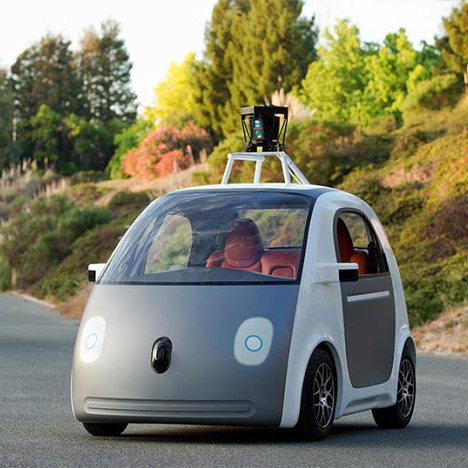News: Google has revealed footage of a self-driving vehicle with no steering wheel or pedals, announcing that it expects to roll out its first pilot scheme on public roads in "the next couple of years".
A video of the first non-Google employees trying out one of the tech giant's self-driving car prototypes shows a vehicle with no steering wheel, accelerator or brake pedal, which is operated by pushing a button.
According to Google, the prototype cars have in-built sensors that can detect objects up to two football-field lengths away in all directions and have a speed cap of 25 miles per hour.
The company is planning to build "about a hundred" of the vehicles and will start testing versions with manual controls later this summer.
"If all goes well, we'd like to run a small pilot program here in California in the next couple of years," said Chris Urmson, director of Google's self-driving car project.
"We're going to learn a lot from this experience, and if the technology develops as we hope, we'll work with partners to bring this technology into the world safely."
In 2010, Google announced that it had begun test driving automated cars that used detailed maps of information collected by manually driven vehicles combined with on-board video cameras, radar sensors and a laser range finder to "see" other traffic.
The company said it was developing the cars in an effort to halve the number of lives lost every year to traffic accidents, increase the productivity of passengers and create efficient "highway trains" that would help cut energy consumption.
"We're now exploring what fully self-driving vehicles would look like by building some prototypes; they'll be designed to operate safely and autonomously without requiring human intervention," said Urmson.
"It was inspiring to start with a blank sheet of paper and ask, 'What should be different about this kind of vehicle?'," said Urmson. "We started with the most important thing: safety."
The interior of the cars has been designed "for learning, not luxury" said Google. There are seat belts for the two seats, a space for passengers possessions, stop and start buttons and a screen to show the route.
"The vehicles will be very basic — we want to learn from them and adapt them as quickly as possible — but they will take you where you want to go at the push of a button," said Urmson. "That's an important step toward improving road safety and transforming mobility for millions of people."
The company has launched a page on its social media platform Google+ for the project, and is encouraging members of the public to share their thoughts on the cars and tell them what they'd like to see in a vehicle if the necessary objects required for steering and breaking are removed.

